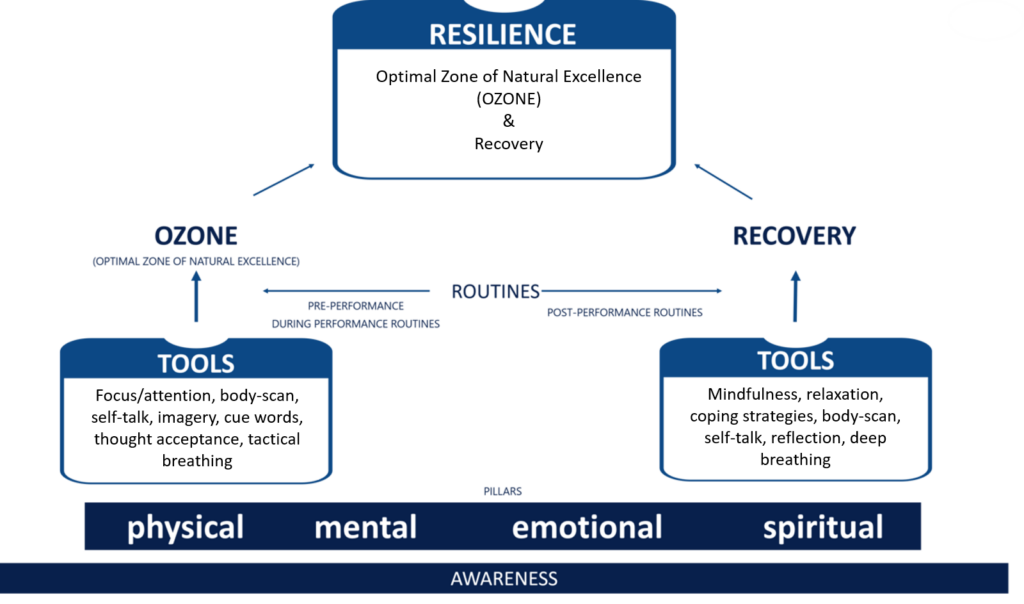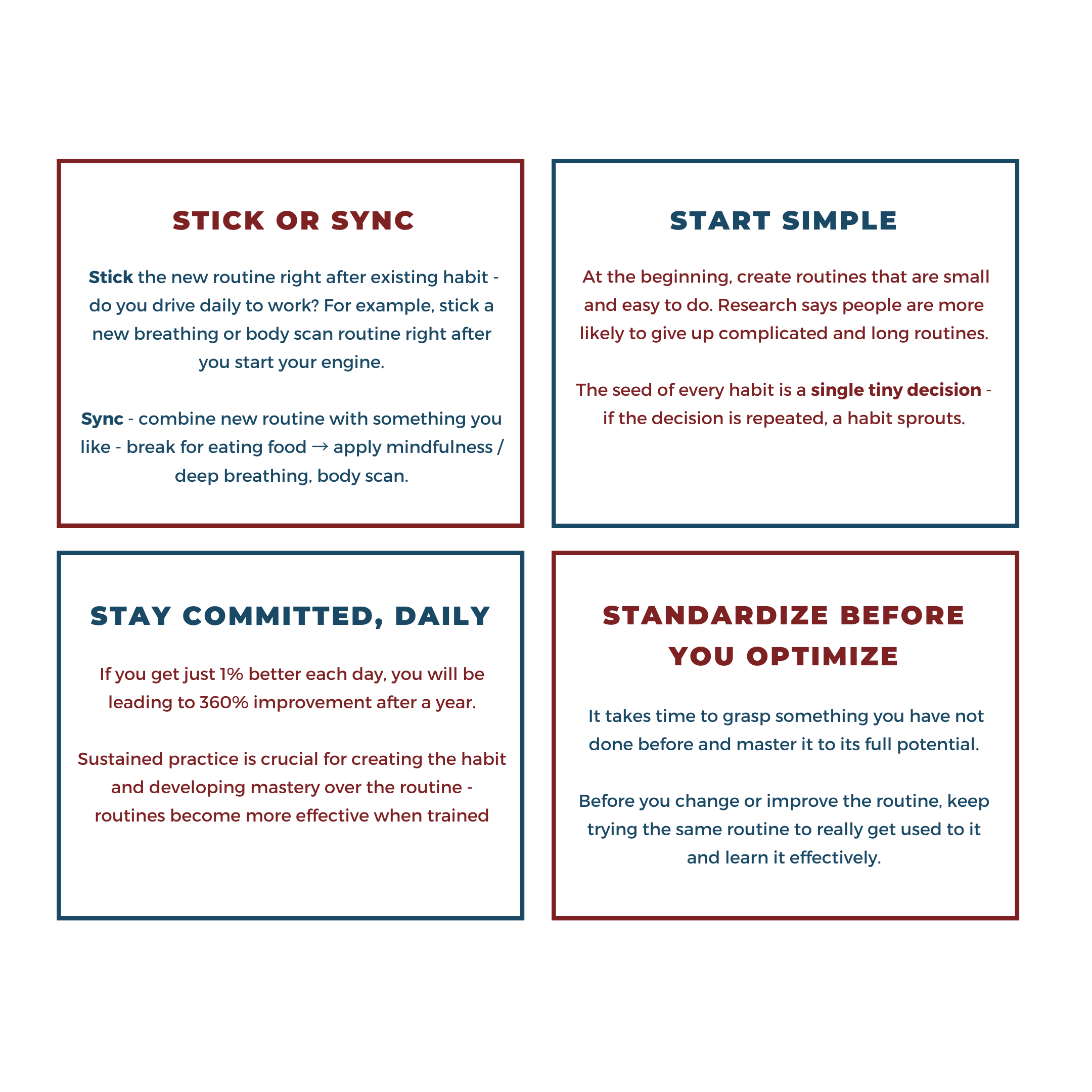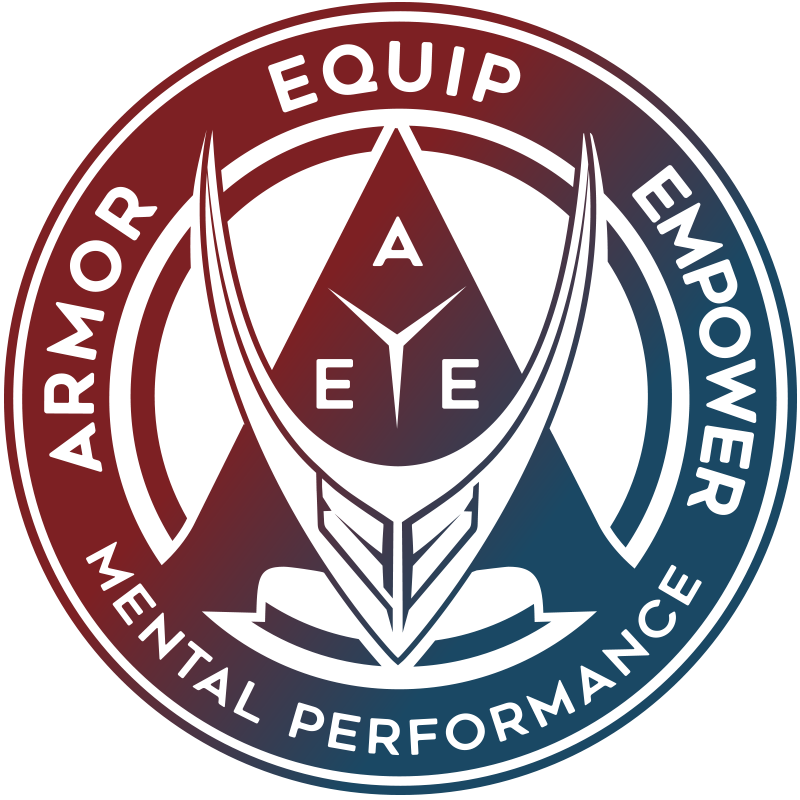resilience & ozone
How do we define resilience?
Resilience is the skill of preparing, handling, and bouncing back from stressful situations consistently. It’s studied and applied in mental training for different performance domains, for example, military and other high-risk occupations, sport, and performing arts.
We will talk about how to develop and maintain resilience, first we start with how we conceptualize it.
How do we conceptualize resilience?

Key Concepts from this module
RESILIENCE: a skill of preparing, handling, and bouncing back from stressful situations.
RESILIENCE = OZONE + RECOVERY
OZONE: an inner state that allows us to perform best when it matters the most
RECOVERY: recharging after a high-stress event to be able to get back into OZONE
ROUTINES: Pre, During, and Post Performance; habits that help get into OZONE or recover
TOOLS: techniques we implement into our routines to get into OZONE or recover better
AWARENESS: awareness allows us to check-in with our current state (the 4 pillars) so we can get into/maintain OZONE or fully disengage to recover.
Optimal Zone of Natural Excellence (OZONE)

Where does our path to resilience begin?
Resilience always begins begins with awareness.
Importance – A – B, core skill for checking 4 pillars
If you know you’re at work, but you’re aware that you are not fully engaged, you then can apply mental tools to get fully engaged into your work.
We would like you to develop awareness of what your worst and best performance feel and look like.
Awareness allows you to better identify what is needed to fully engage or fully disengage when it matters (work/home). With appropriate awareness, you are able to focus on what’s important in the moment and facilitate full engagement.
How do you develop and sustain resilience?
The way to develop and sustain resilient is through routines.
- Pre-performance routines: increases ability to fully disengage from non-work related problems; increases ability to fully engage in work
- During performance routines: allows you to stay in or as close as possible to OZONE while performing
- Post-performance routines: allows for efficient recovery:
- 1) processing the high-stress incident,
- 2) disengaging from the high-stress incident,
- 3) recharging, and
- 4) preparing for re-engagement in work.
What does resilience look like in your job or this line of work?
What have you done that has been working for you?
Key elements of routines
- Routines are very individual. Keep what works for you.
- It takes time to establish a routine
- Consistency and commitment make the routine effective.
- Avoid adding in behavior or action to an established routine – this will result in a decrease of effectivity.
- Keep the routine short.
Generally suggested process of a routine:
- Check-in with your pillars (this part can be skipped; i.e. for cue words before the call)
- See which pillar needs to be adjusted for getting into OZONE (mental, physical, emotional, spiritual)
- Choose a routine related to the pillar
How to create a sustainable routine

